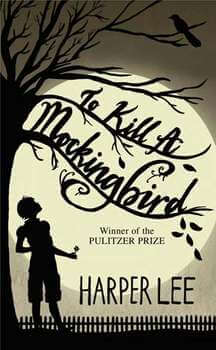- The Meaning of Critical Thinking: A Key Skill for Navigating Today’s Information Landscape - November 3, 2025
- Grandparents Can Develop Activist Grandchildren - September 29, 2025
- Top Six Reasons Credit Union Benefits Are a Smart Choice Over Banks - August 18, 2025
Last Updated on September 30, 2025
To Kill a Mockingbird, Harper Lee’s book about racial tensions in a small Alabama town, sits at the top of my list of favorite books. But did Harper Lee need a sensitivity reader for To Kill a Mockingbird? In this post, I describe the purpose of a sensitivity reader and examine Lee’s book to see how she portrayed characters with marginalized identities.

Ultimately, the magazine’s editor issued an apology and promised to use sensitivity readers in the future.
What is the Purpose of a Sensitivity Reader?
Sensitivity readers ensure that authors are faithful in their portrayal of characters with marginalized identities. In particular, author sensitivity is important if the character is outside your identity. For example, if you are white and writing about a black person. Or straight and writing about a queer person. Sensitivity readers assist authors in crafting more nuanced characters and avoiding bias and stereotypes.
I settled in to think about great characters whose authors’ identities didn’t match the characters’ identities. I turned to a treasured classic: Harper Lee’s To Kill a Mockingbird.
Did Harper Lee’s To Kill a Mockingbird Need a Sensitivity Reader?

Harper Lee’s To Kill a Mockingbird is set in 1936 and the story highlights racial tensions in a small Alabama town.
Many passages from this wonderful book stick with me. One of my favorite sections is when Scout attends church with Calpurnia. She describes the cemetery:
A few graves in the cemetery were marked with crumbling tombstones; newer ones were outlined with brightly colored glass and broken Coca-Cola bottles. Lightning rods guarding some graves denoted dead who rested uneasily; stumps of burned-out candles stood at the heads of infant graves. It was a happy cemetery.
To illustrate the idea of sensitivity, I focus on Lee’s main and supporting characters. Harper Lee was a white, cisgender, Christian, southern woman. Her main character was Scout Finch, a white, southern, Christian, female child. Lee’s identity matches Scout’s.
On the other hand, Atticus Finch, Scout’s father, is a white, cisgender, Christian, southern man. Lee modeled Atticus after her father, A.C. Lee, a newspaper editor and lawyer who defended black people. Atticus’s identity as a white, educated, Christian, male was not marginalized. Lee was likely on solid ground with Atticus.
Then I thought about the array of characters she also writes:
- Boo Radley, a man cruelly abused by his family, is afraid to come out of the house.
- Tom Robinson, a black, poor, southern, disabled man.
- Mayella Ewell, an abused young woman who falsely accuses Tom of rape.
- Mrs. Henry Lafayette Dubose, an elder, racist woman with a morphine addiction.
And many more richly imagined characters. Did Harper Lee’s To Kill a Mockingbird need a sensitivity reader?
How do Sensitivity Readers Help?
Sensitivity readers review manuscripts from their perspective and background. For example, if they had existed when Lee wrote this book in 1960, they could have given feedback on:
- Ageism, substance abuse, and death attitudes for the character of Henry Lafayette Dubose.
- Bullying, emotional abuse, and mental illness for the character of Boo Radley.
- Race, socioeconomic class, and physical disability issues for the character of Tom Robinson.
Did Harper Lee need a sensitivity reader for Mockingbird? Considering that this gifted writer based her characters on family and neighbors in the town of Monroeville, Alabama, probably not. For example, Boo Radley was based on a neighbor who left presents in the knot of a tree. To Kill a Mockingbird won the Pulitzer Prize for Literature and remains a best seller. However, I’m going to reread it with a different lens; I suspect I will love it just as much.
On the other hand, in another post, I discuss a popular book that could have benefited from the services of a sensitivity reader.
[Like what you’ve read? Follow the blog so you don’t miss any content.]
READ NEXT
Why are Sensitivity Readers So Controversial?
More about sensitivity readers from editor Trish Lockard:
Sensitivity Readers: An Editing Specialty Comes of Age
Sensitivity Readers Are Not Censors
Finding Your Place in the Pride Movement: How to be a Good LGBTQ+ Ally
Writing is powerful. Browse more examples of artistic activism.



Pingback: Why are Sensitivity Readers So Controversial?
Pingback: How to Use Artistic Activism to Change the World